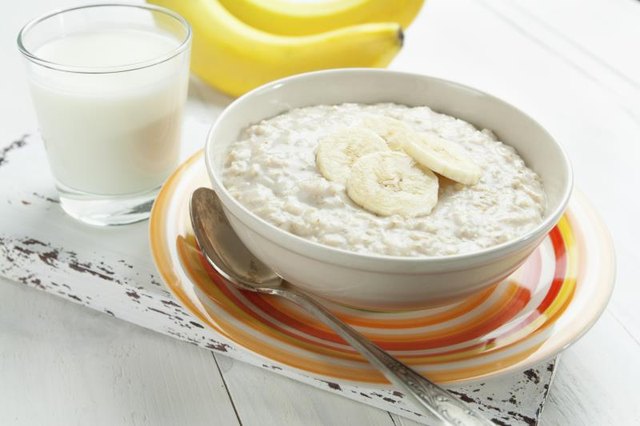| [1] | D. N. Duvick and K. G. Cassman, “Post-Green-Revolution Trends in Yield Potential of Temperate Maize in the North-Central United States,” Crop Science, Vol. 39, No. 6, 1999, pp. 1622-1630. doi:10.2135/cropsci1999.3961622x |
|
| [2] | I. Turgut, A. Duman, U. Bilgili and E. Acikgoz, “Alternate Row Spacing and Plant Density Effects on Forage and Dry Matter Yield of Maize Hybrids (Zea mays L.). Journal of Agronomy and Crop Science, Vol. 191, No. 2, 2005, pp. 146-151. doi:10.1111/j.1439-037X.2004.00146.x |
|
| [3] | D. E. Farnham, “Row Spacing, Plant Density and Hybrid Effects on Corn Grain Yield and Moisture,” Agronomy Journal, Vol. 93, No. 5, 2001, pp. 1049-1053. doi:10.2134/agronj2001.9351049x |
|
| [4] | G. A. Johnson, T. R. Hoverstad and R. E. Greenwald, “Integrated Weed Management Using Narrow Corn Row Spacing, Herbicides, and Cultivation,” Agronomy Journal, Vol. 90, No. 1, 1998, pp. 40-46. doi:10.2134/agronj1998.00021962009000010008x |
|
| [5] | P. M. Porter, D. R. Hicks, W. E. Lueschen, J. H. Ford, D. D. Warnes and T. R. Hoverstad, “Maize Response to Row Width and Plant Density in the Northern Maize Belt,” Journal of Production Agriculture, Vol. 10, No. 2, 1997, pp. 293-300. |
|
| [6] | W. J. Cox, D. R. Cherney and J. J. Hanchar, “Row Spacing, Hybrid, and Plant Density Effects on Corn Silage Yield and Quality,” Journal of Production Agriculture, Vol. 11, No. 1, 1998, pp. 128-134. |
|
| [7] | C. A. Shapiro and C. S. Wortmann, “Corn Response to Nitrogen Rate, Row Spacing and Plant Density in Eastern Nebraska,” Agronomy Journal, Vol. 98, No. 3, 2006, pp. 529-535. doi:10.2134/agronj2005.0137 |
|
| [8] | W. D. Widdicombe and K. D. Thelen, “Row Width and Plant Density Effects on Corn Grain Production in the Northern Corn Belt,” Agronomy Journal, Vol. 94, No. 5, 2002, pp. 1020-1023. doi:10.2134/agronj2002.1020 |
|
| [9] | F. C. Ogbo, “Conversion of Cassava Wastes for Biofertilizer Production Using Phosphate Solubilizing Fungi,” Bioresource Technology, Vol. 101, No. 11, 2010, pp. 4120-4124. doi:10.1016/j.biortech.2009.12.057 |
|
| [10] | H. Besharati, F. Noorgholipour, M. J. Malakouti, K. Khavazi, M. Lotfollahi, M. S. Ardakani, “Direct Application of Phosphate Rock to Iran Calcareous Soils,” International Meeting on Direct Application of Phosphate Rock and Related Appropriate Technology, Kuala Lumpur, Malaysia, 16-21 July 2001, pp. 277-279. |
|
| [11] | S. A. Omar, “The Role of Rock-Phosphate-Solubilizing Fungi and Vesicular-Arbuscular Mycorrhiza (VAM) in Growth of Wheat Plants Fertilized with Rock Phosphate,” World Journal of Microbiology and Biotechnology, Vol. 14, No. 2, 1998, pp. 211-218. doi:10.1023/A:1008830129262 |
|
| [12] | P. Gyaneshwar, K. G. Naresh, L. J. Parekh and P. S. Poole, “Role of Soil Microorganisms in Improving P Nutrition of Plants,” Plant and Soil, Vol. 245, No. 1, 2002, pp. 83-93. doi:10.1023/A:1020663916259 |
|
| [13] | M. Cabello, G. Irrazabal, A. M. Bucsinszky, M. Saparrat and S. Schalamuk, “Effect of an Arbuscular Mycorrhizal Fungus, Glomus Mosseae, and a Rock-Phosphatesolubilizing Fungus, Penicillium Thomii, on Mentha Piperita Growth in a Soilless Medium,” Journal of Basic Microbiology, Vol. 45, No. 3, 2005, pp. 182-189. doi:10.1002/jobm.200410409 |
|
| [14] | H. Chung, M. Park, M. Madhaiyan, S. Seshadri, J. Song, H. Cho and T. Sa, “Isolation and Characterization of Phosphate Solubilizing Bacteria from the Rhizosphere of Crop Plants of Korea,” Soil Biology and Biochemistry, Vol. 37, No. 10, 2005, pp. 1970-1974. doi:10.1016/j.soilbio.2005.02.025 |
|
| [15] | A. Peix, R. Rivas, I. Santa-Regina, P. F. Mateos, E. Martinez-Molina, C. Rodriguez-Barrueco and E. Velazquez, “Pseudomonas Lutea sp. nov., a Novel Phosphate-Solubilizing Bacterium Isolated from the Rhizosphere of Grasses,” International Journal of Systematic and Evolutionary Microbiology, Vol. 54, No. 3, 2004, pp. 847-850. doi:10.1099/ijs.0.02966-0 |
|
| [16] | S. R. Draper, “International Rules for Seed Testing,” Seed Science and Technology, Vol. 13, 1985, pp. 342-343. |
|
| [17] | SAS Institute, “SAS/STAT, User’s Guide,” Version 9.1, SAS Institute Inc., Cary, 2003. |
|
| [18] | W. E. Larson and J. J. Hanway, “Corn Production,” In: G. F. Sprague, Ed., Corn and Corn Improvement, American Society of Agronomy, Inc., Madison, 1977, pp. 625-669. |
|
| [19] | R. G. Hoeft, E. D. Nafziger, R. R. Johnson and S. R. Al-drich, “Modern Corn and Soybean Production,” MCSP Publ., Savoy, 2000, 353 Pages. |
|
| [20] | Z. M. El-Sirafy, H. J. Woodard and E. M. El-Norjar, “Contribution of Biofertilizers and Fertilizer Nitrogen to Nutrient Uptake and Yield of Egyptian Winter Wheat,” Journal of Plant Nutrition, Vol. 29, No. 4, 2006, pp. 587- 599. doi:10.1080/01904160600564287 |
|
| [21] | M. S. Khan, A. Zaidi and P. A. Wani, “Role of Phosphate-Solubilizing Microorganisms in Sustainable Agriculture—A Review,” Agronomy for Sustainable Development, Vol. 27, No. 1, 2007, pp. 29-43. doi:10.1051/agro:2006011 |
|
| [22] | P. A. Banks, P. W. Santelmann and B. B. Tucker, “Influence of Long-Term Soil Fertility Treatments on Weed Species in Winter Wheat,” Agronomy Journal, Vol. 68, No. 5, 1976, pp. 825-827. doi:10.2134/agronj1976.00021962006800050037x |
|
| [23] | C. Andreasen, J. C. Streibig and H. Hass, “Soil Properties Affecting the Distribution of 37 Weed Species in Danish Fields,” Weed Research, Vol. 31, 1991, pp. 181-187. doi:10.1111/j.1365-3180.1991.tb01757.x |
|
| [24] | R. Verma, H. R. Agarwal and V. Nepalia, “Effect of Weed Control and Phosphorus on Crop-Weed Competition in Fenugreek (Trigonella foenum-graecum),” Indian Journal of Weed Science, Vol. 31, No. 4, 1999, pp. 265- 266. |
|
| [25] | J. Belnap, S. K. Sherrod and M. E. Miller, “Effects of Soil Amendments on Germination and Emergence of Downy Brome (Bromus Tectorum) and Hilaria Jamesii,” Weed Science, Vol. 51, No. 3, 2003, pp. 371-378. doi:10.1614/0043-1745(2003)051[0371:EOSAOG]2.0.CO;2 |
|
| [26] | R. E. Blackshaw, R. N. Brandt, H. H. Janzen and T. Entz, “Weed species response to phosphorus fertilization,” Weed Science, Vol. 52, No. 3, 2004, pp. 406-412. doi:10.1614/WS-03-122R |
|
| [27] | J. Di Tomaso, “Approaches for Improving Crop Competitiveness through the Manipulation of Fertilization Strategies,” Weed Science, Vol. 43, No. 3, 1995, pp. 491- 497. |
|
| [28] | C .J. Swanton and S. F. Weise, “Integrated Weed Management: The Rationale and Approach,” Weed Technology, Vol. 5, No. 3, 1991, pp. 657-663. |
|
| [29] | M. Tollenaar, D. E. McCoulough and L. M. Dwyer, “Phsiological basis of the genetic improvement of corn. In: G. A. Slafer, Ed., Genetic Improvement of Field Crops, Marcel Dekker Inc., New York, 1994, pp. 183-236. |
|
| [30] | S. D. Murphy, Y. Yakubu, S. F. Weise and C. J. Swanton, “Effect of Planting Patterns and Inter-Row Cultivation on Competition between Corn (Zea mays) and Late Emerging Weeds,” Weed Science, Vol. 44, 1996, pp. 856-870. |
|
| [31] | Z. S. Knezevic, M. J. Horak and R. L. Vanderlip, “Estimates of Physiological Determinants for Amaranthus retroflexus,” Weed Science, Vol. 47, 1999, pp. 291-296. |







